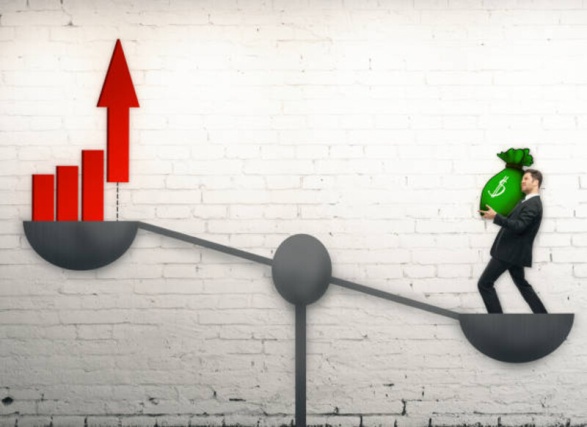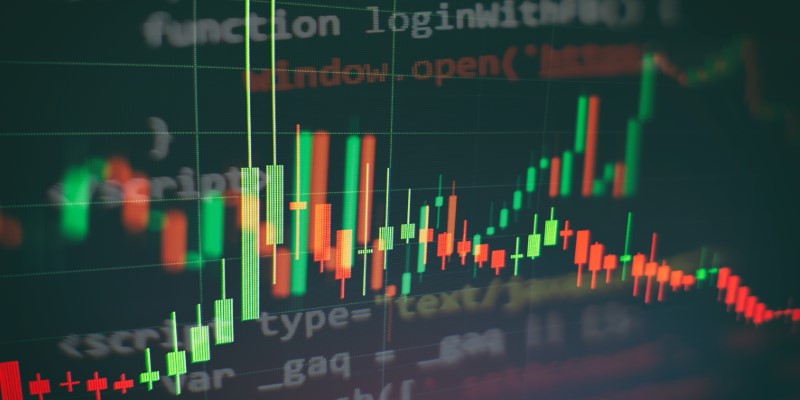Understanding Wage-Push Inflation: A Detailed Overview
Dec 08, 2023 By Triston Martin
Wage-push inflation, a unique economic phenomenon, is a critical concept to understand for anyone interested in the dynamics of inflation and its impact on the economy. It refers to a situation where the cost of goods or services increases due to a rise in wages. Essentially, when companies are pressured to increase wages, they often offset this added cost by raising the prices of their goods or services, leading to inflation. This introduction will delve into the intricacies of wage-push inflation, exploring its causes, effects, and significance in a modern economy. The reader will gain a comprehensive understanding, enabling them to interpret relevant economic trends and phenomena with a more informed perspective.
Definition of Wage-Push Inflation

Wage-push inflation is a form of demand-pull inflation, where prices rise due to increased consumer demand and insufficient supply. However, unlike other forms of demand-pull inflation, wage-push inflation's primary cause is an increase in wages rather than consumer demand or production costs.
The underlying principle behind wage-push inflation is the concept of cost-push theory. This economic theory states that increasing the costs of production, such as labor costs, will result in higher prices for goods and services. When businesses face a rise in wages, they are forced to increase their prices to maintain profitability.
Causes of Wage-Push Inflation
Several factors can contribute to wage-push inflation. The most significant cause is an increase in labor costs due to rising wages. This increase in wages can occur due to various factors, including:
- Labor union negotiations: When labor unions negotiate higher wages for their members, it can lead to an increase in overall wages in the economy.
- Minimum wage laws: Governments may increase the minimum wage to improve worker welfare. While this may benefit workers, it can also contribute to inflation.
- High demand for skilled labor: In a competitive job market, companies may need to offer higher wages to attract and retain skilled workers, leading to an increase in overall wages.
- High demand for goods and services: When consumer demand for goods and services is high, businesses may need to hire more workers and pay them higher wages, contributing to wage-push inflation.
Effects of Wage-Push Inflation
Wage-push inflation can have significant effects on the economy and its various stakeholders. Some of the most notable impacts include:
- Reduced purchasing power: As prices rise, consumers' purchasing power decreases, making it more challenging to afford goods and services.
- Decreased competitiveness: When domestic wages increase due to wage-push inflation, companies may struggle to compete with foreign businesses, leading to a decline in international competitiveness.
- Reduced employment: In some cases, companies may respond to higher wages by reducing their workforce or increasing automation, resulting in job losses.
- Increased interest rates: To combat the rising prices caused by wage-push inflation, central banks may increase interest rates, making it more expensive for businesses and consumers to borrow money.
How wage-push inflation affects businesses and the economy as a whole?
Wage-push inflation can have a significant impact on businesses and the economy as a whole. Businesses may struggle to maintain profitability as they face higher labor costs, which can lead to reduced output or increased prices for goods and services. This can result in a slowdown in economic growth and potentially lead to an economic recession.
Moreover, wage-push inflation can also affect various sectors differently. For example, industries that rely heavily on labor, such as manufacturing or retail, may experience more significant impacts than those that use automation and technology. Additionally, businesses with long-term contracts and fixed prices may also struggle to adjust to wage-push inflation quickly.
Effects on employees and consumers
Employees may initially benefit from wage-push inflation as they receive higher wages. However, if the increase in wages leads to a rise in prices for goods and services, their purchasing power may be eroded. This can also result in lower job security and potential job losses as businesses try to cut costs.
Consumers, on the other hand, may experience a decline in their standard of living as they struggle to afford goods and services with higher prices. This can lead to a decrease in consumer confidence and spending, further impacting the economy.
Mitigation Strategies and Economic Policies

There are various strategies and economic policies that governments and central banks can implement to mitigate the effects of wage-push inflation. Some of these include:
- Tight monetary policy: Central banks may use tools like raising interest rates or reducing money supply to control inflation.
- Fiscal policy measures: Governments may choose to increase taxes or reduce government spending to curb inflation.
- Supply-side policies: Governments may also implement policies to encourage businesses to increase productivity, leading to lower production costs and potentially reducing inflationary pressure.
Role of policy makers and economic institutions
Policy makers and economic institutions play a crucial role in managing wage-push inflation. They must monitor the economy closely and take timely action to prevent excessive increases in wages and prices. Additionally, they can also implement structural policies to improve labor market flexibility and address underlying issues that contribute to wage-push inflation.
Conclusion
Wage-push inflation can have significant impacts on businesses, employees, consumers, and the economy as a whole. It is essential to understand its causes, effects, and potential mitigation strategies to make informed decisions that can help manage inflationary pressures. By carefully monitoring wage levels and implementing appropriate economic policies, countries can strike a balance between fair wages for workers and stable prices for consumers. Ultimately, this can lead to a healthy and sustainable economy for all stakeholders involved. So, it is crucial to keep an eye on wage-push inflation and take appropriate measures to address its consequences effectively.
-
 Investment Feb 12, 2024
Investment Feb 12, 2024Things To Know About Investing in Precious Metals
The scarcity of precious metals contributes to their high market value. The fact that certain minerals are only mined in small quantities each year contributes to their high prices due to scarcity
-
 Currency Aug 27, 2024
Currency Aug 27, 2024Unlocking the Power of RSI: A Complete Guide to the Relative Strength Index for Forex Traders
How to master the RSI indicator in forex trading with this comprehensive guide. Discover effective Relative Strength Index strategies to boost your trading results
-
 Investment May 09, 2024
Investment May 09, 2024Everything You Should Know About MetLife Insurance
MetLife offers term, whole, universal, and MetLife burial insurance. Policies let customers tailor coverage, add riders, and pick payment terms.
-
 Banking Nov 12, 2023
Banking Nov 12, 2023What Is Available Credit? A Complete Guide
The amount of money a borrower still has to spend is the amount of credit they have left. This amount can be found by taking the total credit limit on the account and subtracting the amount the borrower has already spent. Your credit card company gives you a credit limit, the most money you can owe at any given time.
